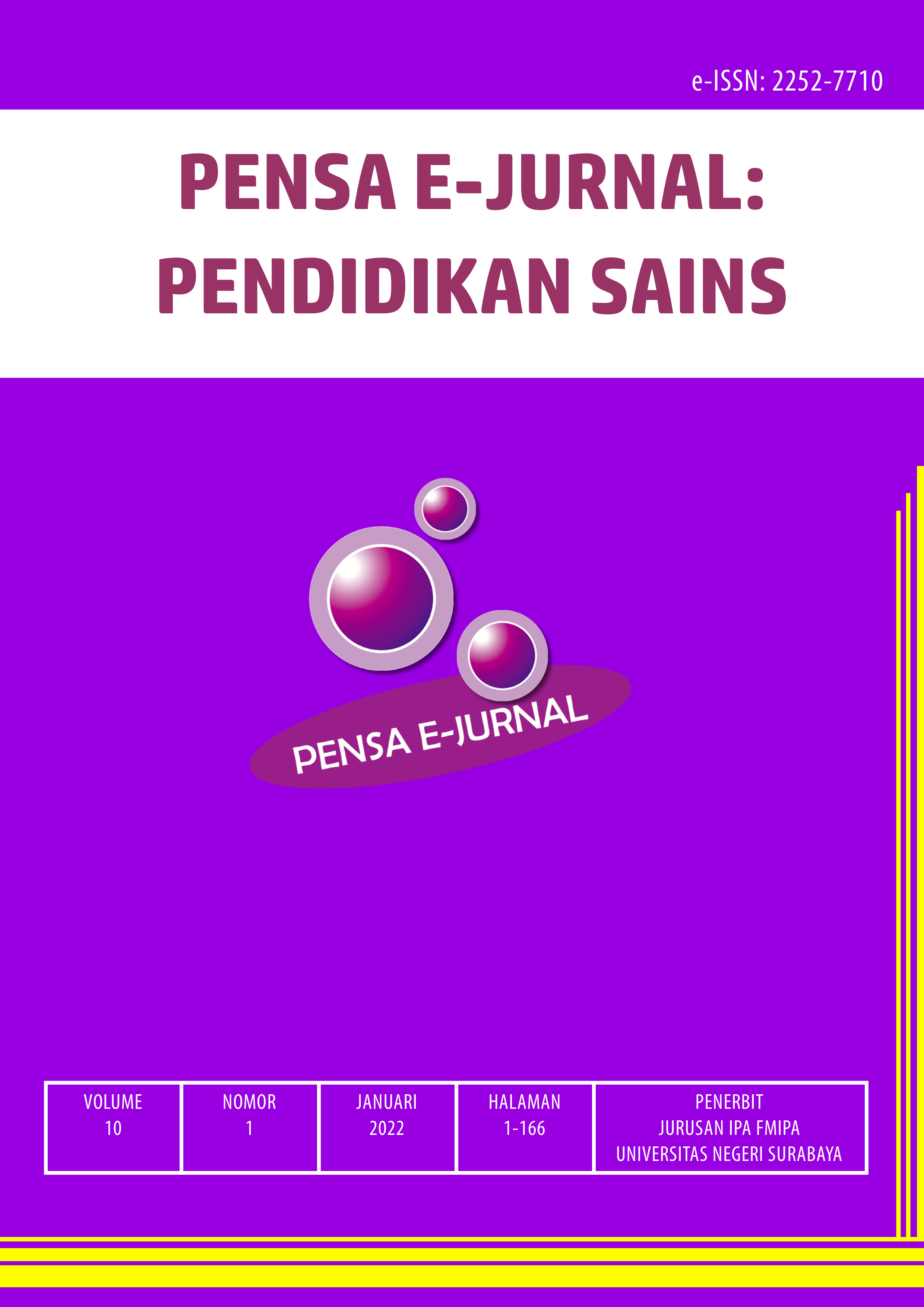Array
DOI:
https://doi.org/10.26740/pensa.v10i1.43965Keywords:
student activity, pandemicAbstract
Currently in various parts of the world are being hit by the Covid-19 pandemic which has caused several sectors to experience a significant impact, one of which is in the world of education. Due to the pandemic, the learning process must be carried out from home. During the learning from home, several problems appeared, one pf which was the decrease in student activity in the learning process, especially in science subjects. The purpose of this was determine the factors that triggered the decline in student inactivity in the learning process of science subjects during the pandemic at SMP Negeri 10 Gresik and SMP Negeri 1 Babat in 2020/2021 academic year. The research approach used descriptive qualitative, and the research subjects were students of class VII, VIII, and IX of SMP Negeri 10 Gresik and SMP Negeri 1 Babat totalling 82 students. A questionnaire was used to collect data. The result showed that the factors that triggered the decline in student activity in the learning process during the pandemic included student conditions during learning, student anxiety during the learning process, student learning motivation, and student environment.
Downloads
Downloads
Published
How to Cite
Issue
Section
 Abstract views: 2008
,
Abstract views: 2008
, PDF Downloads: 13245
PDF Downloads: 13245

















